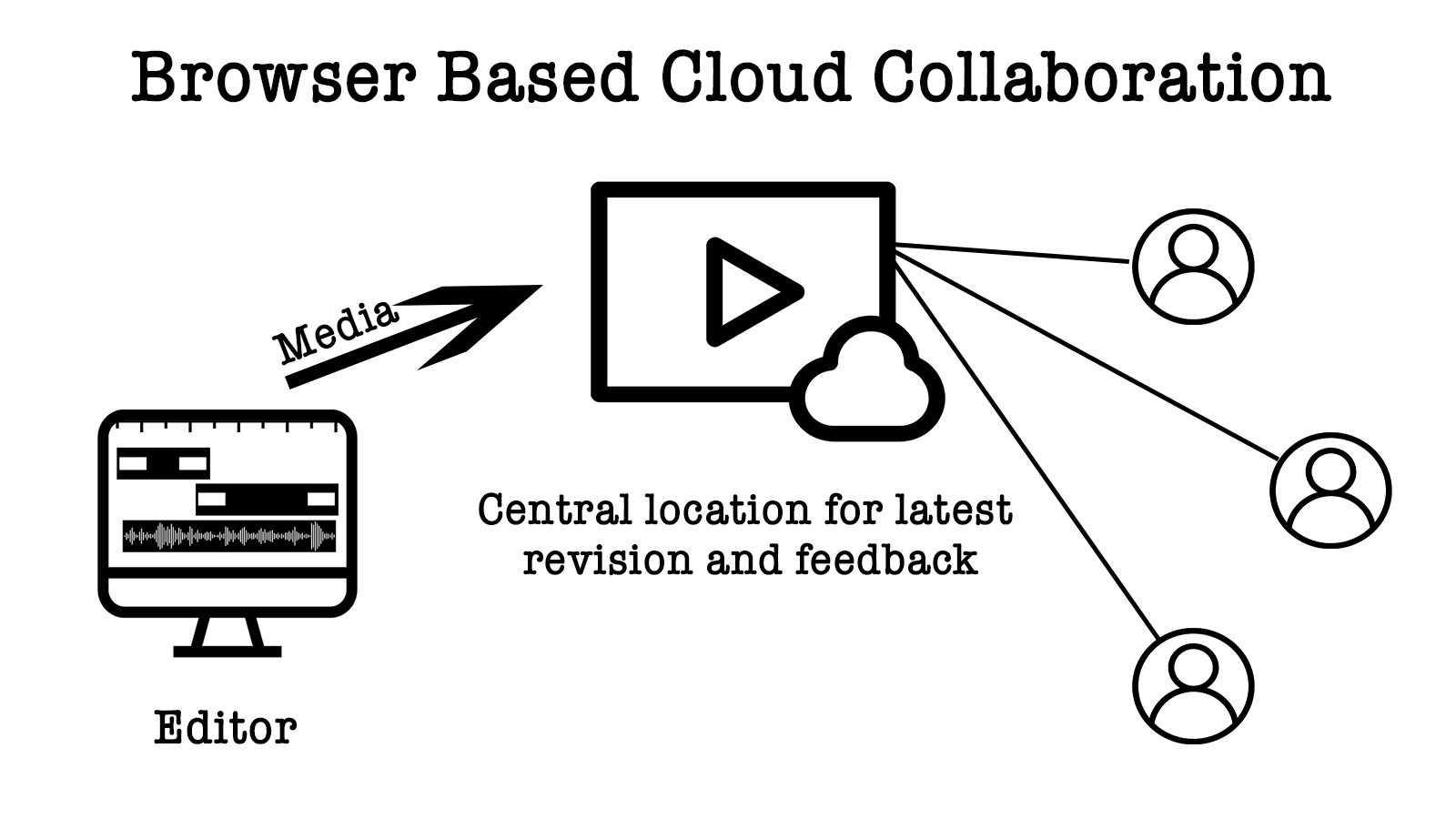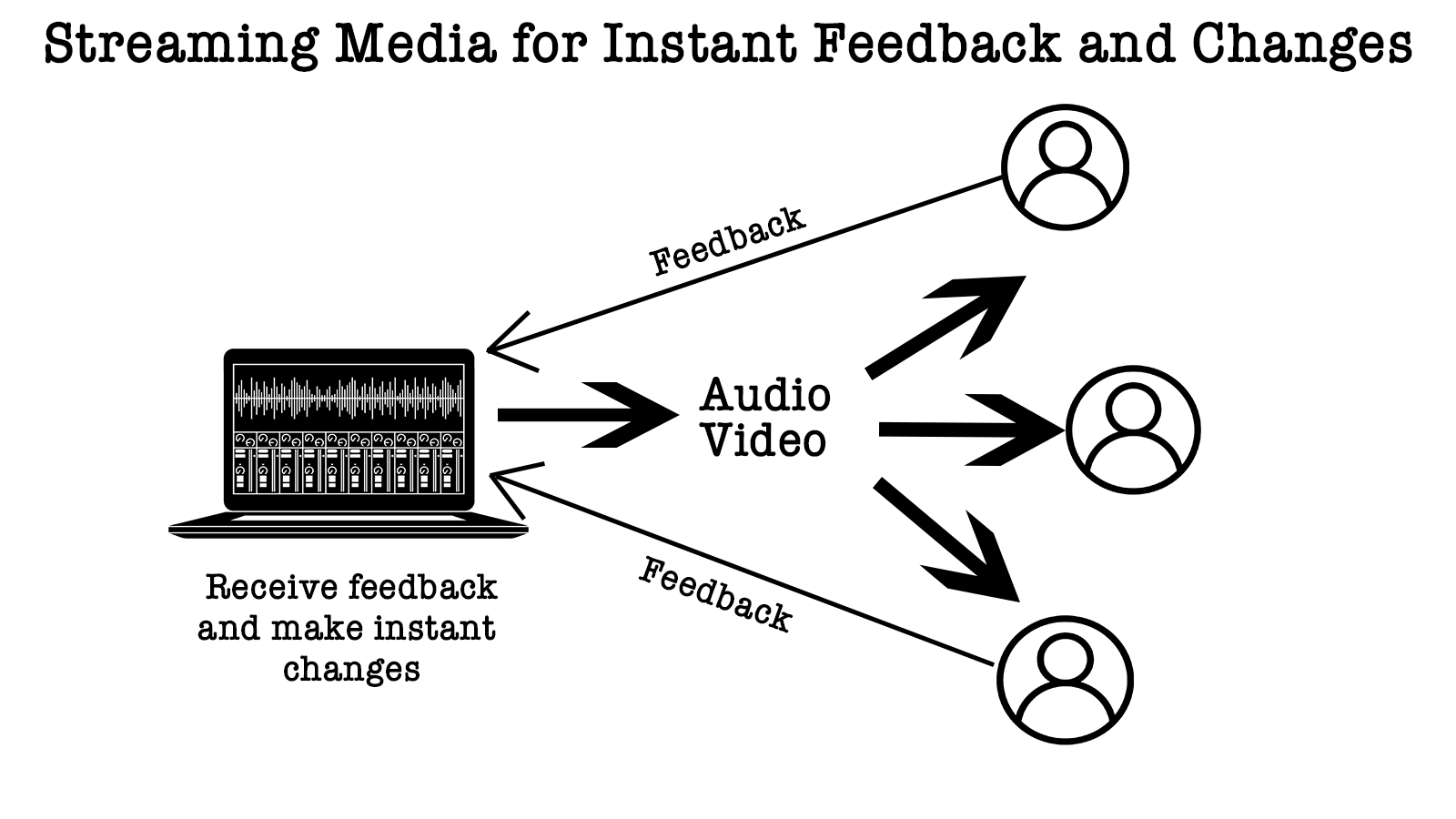Taking the Hybrid Approach to Remote Post Production and Audio Design
How has the cloud impacted our workflows?

If there’s one thing we’ve learned in the past few months, it’s that the cloud is a great tool for teams working in post-production. Teams need to make creative decisions and need a central location for media where everyone can see updates and time-stamped feedback of creative work. Cloud computing allows teams to stay connected remotely in virtual rooms where they see and hear the same media content at the same time and can discuss creative changes and then reconnect when new changes are made.
The discussion part of this process is where things in the cloud can get dicey. Cloud-based solutions may not be enough for all the decisions you’re trying to make that require immediate feedback. You’ll likely find a hybrid approach—one that combines cloud-based applications and streaming media—keeps the creative conversation moving and boosts productivity. Build your content castle in the clouds, by all means, but use streaming to keep the creative flow moving along as you get instant changes.
First, let’s glance at the clouds to better understand why hybrid approaches work so well. There are many solutions that have some sort of cloud-based system for media. Two that stand out are frame.io and Avid's ProTools Cloud Collaboration. Both function a little differently, in that Pro Tools Cloud Collaboration is software where people can open the same session and make changes. The files then get updated for all parties.
Frame.io is a web-based approval and review process and offers plugins that directly link to your editing software, which allows for fast media transfers. Both give access to media files that are updated on a server and show changes to all invited parties. The process is very slick, takes no bandwidth once the files have been uploaded and makes for a really smooth collaborative process, especially when internet speeds and work environments can’t be standardized.
Recently, more involved post-production cloud services have come on the market. They feature self-contained tools where people can do picture edits in real time and have the changes updated on the actual files, without having to upload or download. Services such as Avid’s Media Central are highly efficient and allow real-time viewing and editing while linking to all of the assets that are available for that project. Their recent partnership with Microsoft Azure will bring on a dedicated team for entertainment media, along with added security and other high-level services. Adobe also ups their cloud services by automatically converting hi-res archived assets to low-res copies, or proxies, which are readily available for editing at all times, eliminating time caused by processing and copying large files. The smaller proxy files are directly streamed onto their editing platforms and link directly to the cloud for near real-time edits and previews.
However, fully cloud-based approaches have their problems. One drawback is the time it takes between creating the content and sharing that content. Often, the software used to create may not be the same software used to share content. Post-production audio teams have to wait for users to create a recording, then wait for them to upload that file before we can see it or comment on it. In many collaboration scenarios, and especially in audio, you need live feedback or direction.
That’s because audio sessions have always worked differently than other production tasks. They require performances or feedback that you can only give and get on instinct, in pursuit of a particular vibe. The cloud can make this cumbersome. Remote sessions need real-time streaming because you need to witness the live changes to see if it met your immediate creative thoughts. This feedback keeps talent creative and engaged, helping them find new approaches when what’s happening isn’t working.
The professional video industry's #1 source for news, trends and product and tech information. Sign up below.
The speed of this feedback matters. Muscle memory demands we make and break habits swiftly. Any lag or latency, even just a few moments, changes the dynamic completely. The collaborative energy gets lost, and the session can feel like a “solo” project.
Mixing requires a similarly lively back and forth. Many times, directors will want something different but don’t know exactly what that is until they are in the room with an audio engineer who has the tools to adjust and change things at their fingertips. Going back and forth on creative concepts can be a nightmare in the cloud and it usually ends with compromises no one feels completely happy with.
When you can combine a central location for your files and also provide real-time feedback using the same tools used for creation, then you have the ultimate package for flexibility.
Cloud-based approaches have another potential weakness: security. Security has become an issue with major studios. Many people in the industry feel hesitant to upload content because of:
- Content that’s left to an unknown or unseen management entity;
- Incidents of theft and leaks from an actor or professional who has access to the content;
- Weakness in sharing protocols of the content between users;
- Lack of control of general accessibility of data;
- Lack of monitoring the raw data transfers to and from apps;
- Attacks on cloud application providers; and
- Data loss
Because of this, many people want to use their own servers that are well protected and fully controllable and secure. Another option is streaming the content as raw data, so it doesn’t live on a server, or streaming from personal servers and having security measures tied to that. Once again, combining clouds and streams may be the right answer for your project.
Before the cloud took off, we only had very big and expensive ways to collaborate remotely on post-production projects, with price tags running in the six digits. Cloud computing completely revolutionized this. Cost has become less of any issue, even when multiple software environments are involved. Streaming solutions are also reasonable in price, making a hybrid approach easily accessible for many professional studios. For example, Sohonet’s Clearview Flex requires a dedicated hardware box and one-time installation fee ($500), as well as an annual platform fee ($1,200) and $1,430/month subscription. Evercast does not require hardware, and runs $1,000 a month. One of the most affordable streaming options, Streambox, costs $2,000 for the hardware and $500/month for the software service. For users on the audio side, Soundwhale may be a good fit ($29.99/mo subscription) as it streams uncompressed audio from any source and offers video sync as well.
Cost-effective solutions that are easily accessible by everyone are what will stick not only for the pandemic but also long after it’s over. Whether it’s cloud based editing, live streaming or remote desktop control, we are going to need solutions that don’t put a wrench in our creative workflows as we try to work around distance and the limitations of technology. That may mean creating our own hybrids of these software approaches to keep our serenity and creativity.
Ameen Abdullah is founder and CEO of remote audio collaboration app Soundwhale.




